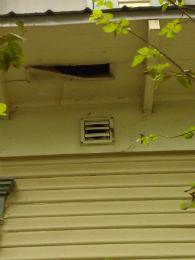Pest Control Austin: What About Austin Rodent Control?
 Rodent control and rodent removal are two of the worst topics to discuss as a home owner. Over the past few weeks these are issues that our pest control Austin customers have had to deal with. It is always a little surprising to customers when an inspector tells them that the scurrying noises on the roof were actually coming from the attic space and were caused by rats. People’s reactions can vary but are usually a mixture of disgusts and surprise. “But I keep a clean house”; doesn’t matter.
Rodent control and rodent removal are two of the worst topics to discuss as a home owner. Over the past few weeks these are issues that our pest control Austin customers have had to deal with. It is always a little surprising to customers when an inspector tells them that the scurrying noises on the roof were actually coming from the attic space and were caused by rats. People’s reactions can vary but are usually a mixture of disgusts and surprise. “But I keep a clean house”; doesn’t matter.
Generally, rats are not too concerned with the homeowner’s ability to keep a clean living space. Rats and other rodents are concerned with survival. They are programed to look for an environment that will allow for survival. An environment that can provide food, water, and shelter is all that is needed to please a rodent. So, to accomplish rodent control you must eliminate these conditions around your home or workplace. If you are already dealing with rats in your living space you will need to focus on rodent removal, and then address the conditions that attracted the pests. After getting rid of the attractive conditions you can increase rodent control by sealing up any holes or access points the rats are using.
To accomplish Austin rodent control first, we should talk about a rat’s habitat. This is the shelter portion of the equation. What to look for can vary depending on the species of rat; here in Central Texas we commonly deal with roof rats. Why are they called roof rats? They are called roof rats because they live much of their life off the ground. They will commonly be found in trees and other types of thick vegetation off the ground. Keep in mind that they can be found at ground level in thick ground cover plants, but it seems that they prefer to be off the ground. They will be looking for any place with good cover. This could be wood piles, thick brush, piles of garbage, ground cover plants, or even an attic space. It would be well worth the time to eliminate elements like these from your property if possible. Keep your ornamental bushes and trees trimmed back of the structure. It isn’t always possible or feasible to get rid of everything touching the house, but anything you can do along these lines will help.
Next, try to consider how rats behave. Rats are nocturnal. For this reason you will not commonly see rats in their habitat. The usually stay still if they sense danger and will quickly run from one cover to the next. They will run for a familiar safe haven if something dangerous takes notice of them. For these reasons you may not ever see rodents even if you have an infestation. Keep your ears open and you may hear activity in coming from your attic. In the attic of a home with a rat infestation you will find droppings, the odor of urine, and burrow holes throughout the insulation. Rats love insulation and these burrow holes are easily spotted if you keep an eye out. This affinity for attic spaces will also leads rats to your roof. They will climb trees or gutters to get to your roof. Once on the roof they will look for a point of entry. They can use small spaces left from the home’s construction (roof intersects) or they can create their own hole. Rats can literally chew through just about anything. Once they chew a small hole they will come and go as they want.
So to recap, here are 5 things you can keep in mind to accomplish Austin rodent control
- Clear away habitat that might attract rats.
- Check your roof for any areas that might be accessible to rats. Check vents, roof intersects, etc. you can screen off these areas to keep rats and other rodents out. This exclusion work should always be performed after rodent removal.
- Rats can chew through anything, so the patch up job you did last year should be checked.
- Trim back trees 4-6 feet off the roof. This will make it harder for rats to get access to your roof.
- Check that attic for droppings and burrow holes if you are hearing noises in the attic.
If you would like your Pest Control Austin company to provide a FREE written inspection, please contact The Bug Master and we would be happy to share some info!
